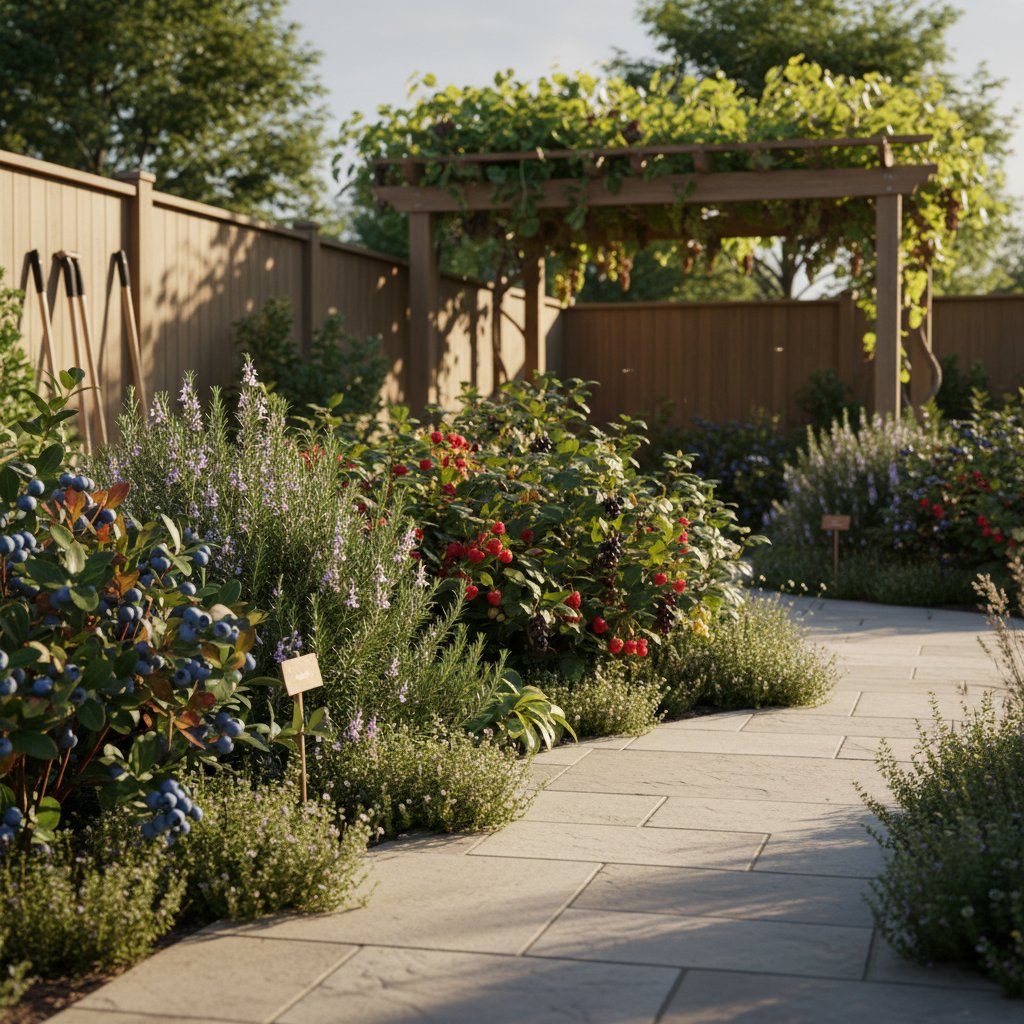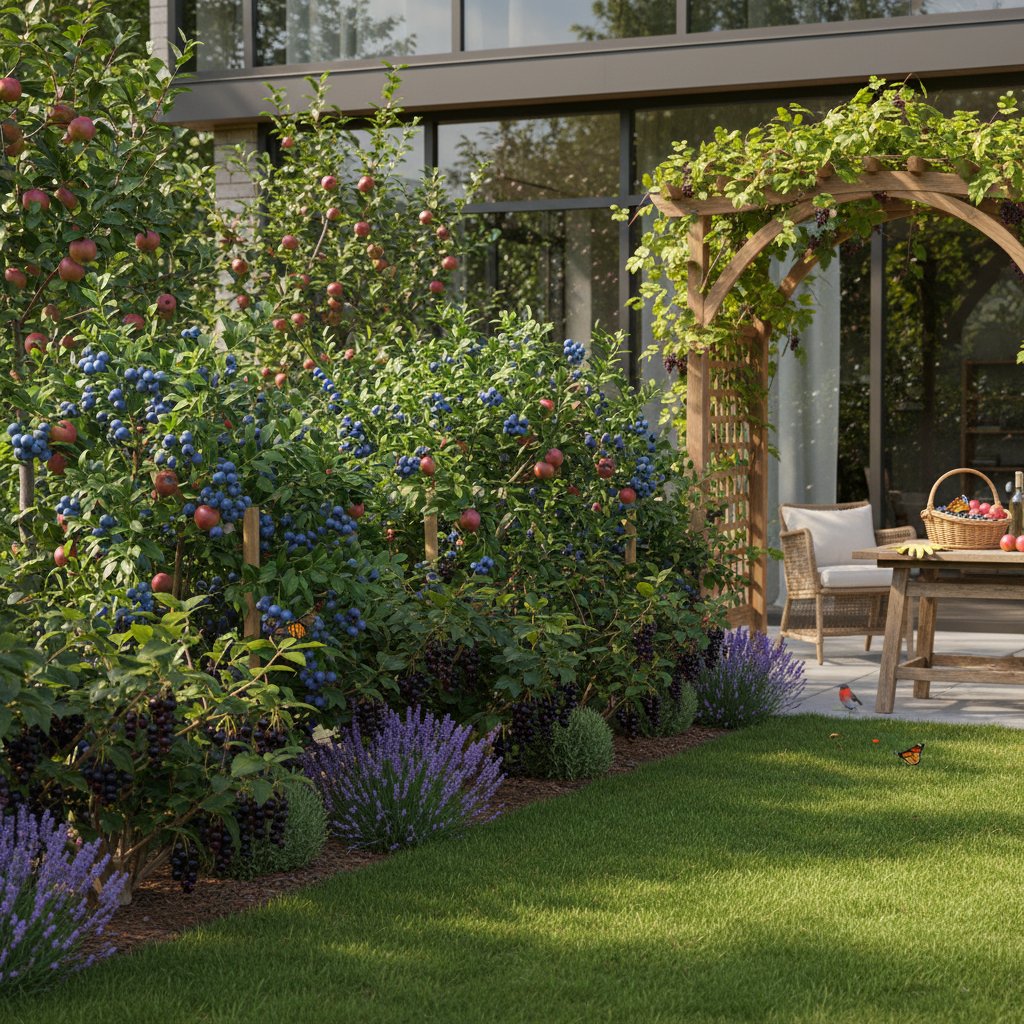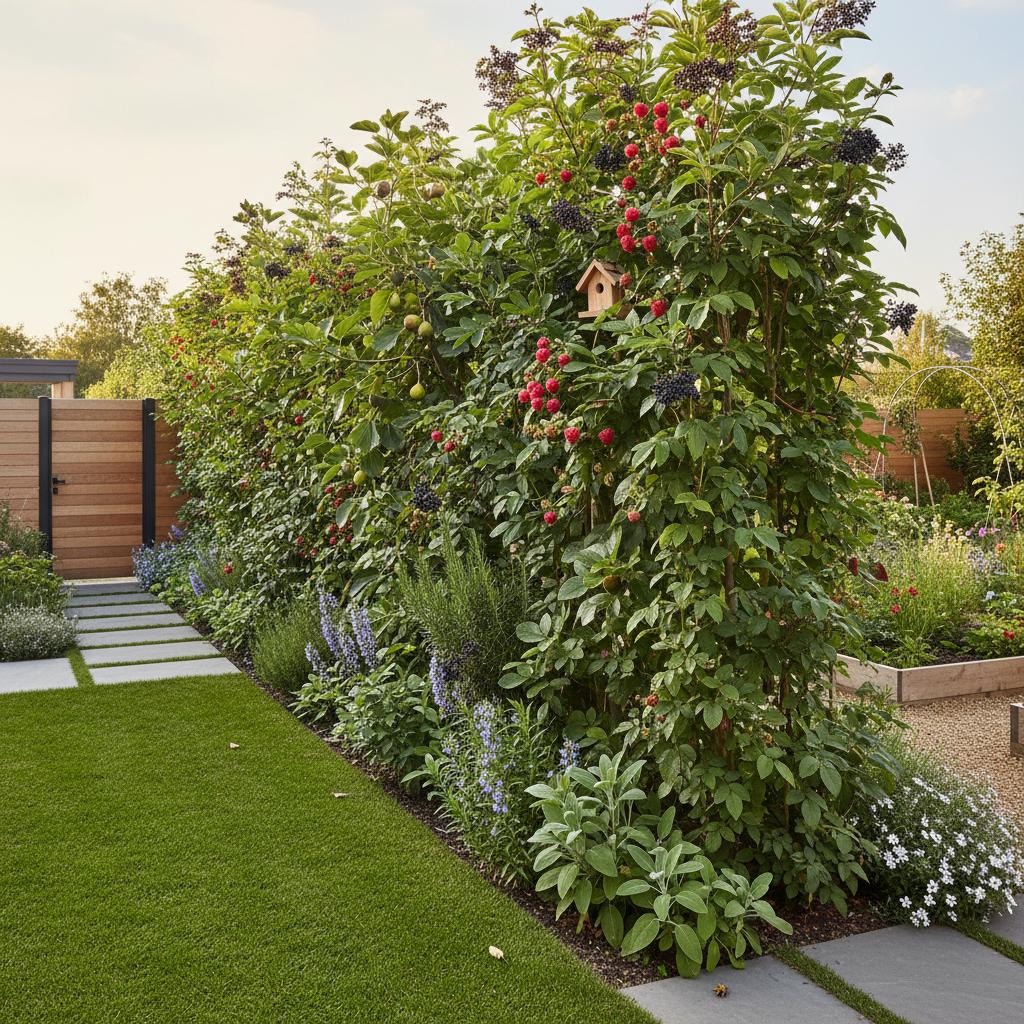The Rise of Edible Hedges in 2025
Consider the row of shrubs bordering your fence. Beyond offering privacy, these plants hold potential to contribute fresh produce to your meals. Homeowners increasingly view hedges as multifunctional elements that combine ornamental value with practical yields. This evolution reflects a broader movement toward sustainable gardening that nourishes both the landscape and daily life.
Edible hedges integrate the elegance of conventional landscaping with the productivity of food cultivation. They deliver fruits, herbs, and edible blooms while providing structure through varied textures and hues. Establishing such a hedge requires deliberate planning, yet the process aligns closely with routine garden maintenance. Over time, this feature emerges as a central, gratifying aspect of your outdoor area.
Planning an Effective Edible Hedge
Assess your site conditions before selecting plants. Factors such as sunlight exposure, soil type, and available space determine the hedge's viability. Tailor the design to match your objectives, whether emphasizing seclusion, noise reduction, or culinary output.
Establishing Clear Objectives
Determine the primary role of your hedge. For substantial screening, select robust fruiting varieties like serviceberry or elderberry. In contrast, compact options such as blueberries, currants, or rosemary suit low borders that yield harvests without dominating the view.
Selecting Appropriate Plants
Approach your hedge as an ecosystem of diverse species to promote resilience and visual appeal. Incorporate a range of plants for year-round interest and productivity. Recommended choices include:
- Blueberries: These compact shrubs display vibrant foliage and deliver antioxidant-rich berries; they thrive in mildly acidic soil.
- Raspberries or blackberries: Ideal for informal edges, these canes yield abundant fruit after establishment.
- Serviceberry: This resilient native offers spring blossoms followed by sweet, petite fruits.
- Currants and gooseberries: Tolerant of partial shade, these suit confined areas with reliable production.
- Herbaceous borders: Varieties like lavender, rosemary, and sage provide aroma and support pollinators.
- Hazelnuts: Structurally upright, these excel in defining property lines with edible nuts.
Combining these selections fosters layered aesthetics and ecological benefits, drawing in pollinators and wildlife throughout the seasons.
Site Preparation and Planting Techniques
Edible shrubs demand thorough groundwork due to their extensive root systems and elevated nutrient requirements. Proper preparation ensures long-term vigor and minimizes future interventions.
Enhancing Soil Quality
Remove existing weeds and declining plants first. Aerate the soil using a garden fork, then incorporate compost to enrich fertility and drainage. Address clay-heavy soils by blending in coarse sand or leaf mold; for sandy profiles, boost organic content to retain moisture effectively.
Determining Spacing and Arrangement
Account for mature dimensions when positioning plants, allowing ample room for expansion. Position blueberries at intervals of two to three feet, whereas elderberries require at least five feet. Initial gaps may appear wide, but plants integrate seamlessly within two to three growing seasons.
Optimal Timing and Initial Maintenance
Schedule planting during temperate periods with workable, moist soil. Irrigate thoroughly post-installation and apply mulch around bases to regulate temperature and deter weeds. Ensure mulch remains clear of stems to prevent moisture buildup and potential decay.
Sustaining Development and Visual Harmony
Manage your hedge as a dual-purpose asset, balancing productivity with design integrity. Regular attention to pruning, nutrition, and biodiversity yields optimal results.
Pruning Strategies for Vitality and Form
Regular trimming maintains neatness and boosts output. In early years, shape the structure by excising feeble or intersecting branches. Post-maturity, prune following fruit collection to stimulate renewal and enhance subsequent yields. Prioritize air circulation and light penetration to mitigate illnesses and improve flavor.
Soil Nutrition Practices
Vigorous soil underpins plant health. Apply compost or aged manure along the hedge in spring for gradual nourishment. Should foliage yellow or production lag, conduct a pH test; adjust acidity for acid-loving species like blueberries using pine needles or peat moss.
Supporting Pollinator Activity
Edible hedges naturally attract beneficial insects and birds through blooms and berries. Permit full flowering on select plants and retain portions of the harvest to sustain visitors. This practice bolsters the garden's balance and ensures consistent productivity.
Integrating Utility with Design Elements
Edible hedges seamlessly enhance ornamental gardens without compromising style. Their inherent diversity often surpasses that of purely decorative alternatives.
Navigating Seasonal Changes
A thoughtfully composed hedge evolves with the calendar. Spring introduces pollinator-drawing flowers and scents; summer features dense leaves and developing fruits. Autumn brings vivid hues and gathering opportunities, while winter exposes graceful silhouettes. This progression maintains garden dynamism across the year.
Merging Edibles and Non-Edibles
Achieve equilibrium by interspersing fruiting shrubs with blooming ornamentals. Alternate berry producers with floral accents or frame hedges with ground-level herbs. Such arrangements yield intricate patterns that emphasize multiplicity and energy. Incremental additions, like inserting edibles amid established shrubs, can refresh the overall ambiance.
Observing and Adapting to Your Hedge's Evolution
As the hedge develops, monitor its responses to your care. Note thriving sections versus those needing adjustment, such as bird concentrations or preferred pollinator spots. These insights refine maintenance and strengthen your bond with the garden.
Harvesting integrates effortlessly into routines, from morning berry picks to evening herb snips. What began as a perimeter transforms into an interactive, sustaining presence.
Ongoing Maintenance and Enduring Benefits
Sustain your hedge through consistent, minimal efforts: post-harvest trims, annual soil amendments, and pest vigilance. Natural processes handle the majority of upkeep.
In return, the hedge moderates yard temperatures, harbors wildlife, and supplies kitchen staples. This transformation reimagines your garden as a dynamic partner, delivering sustained value and inspiration.



